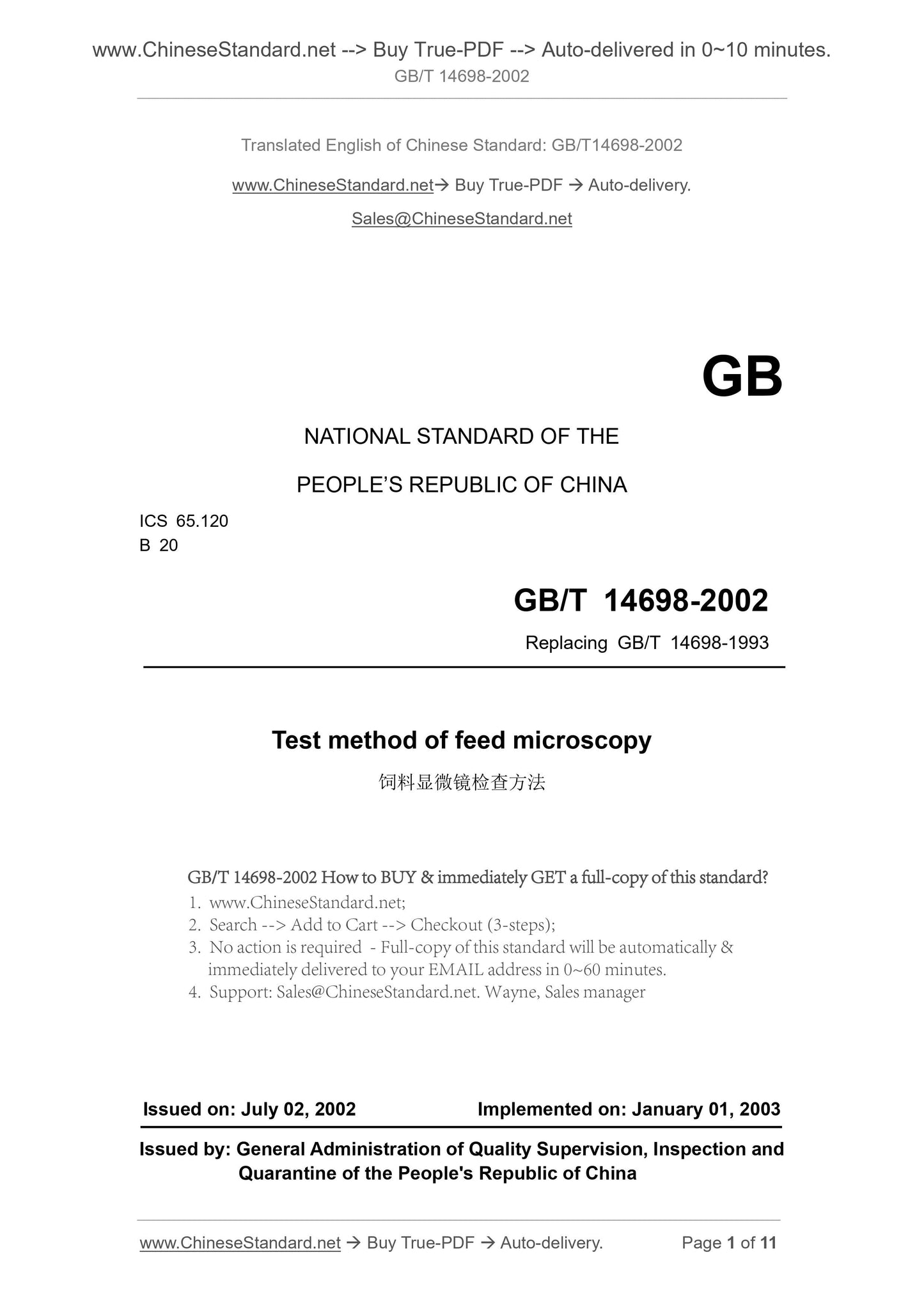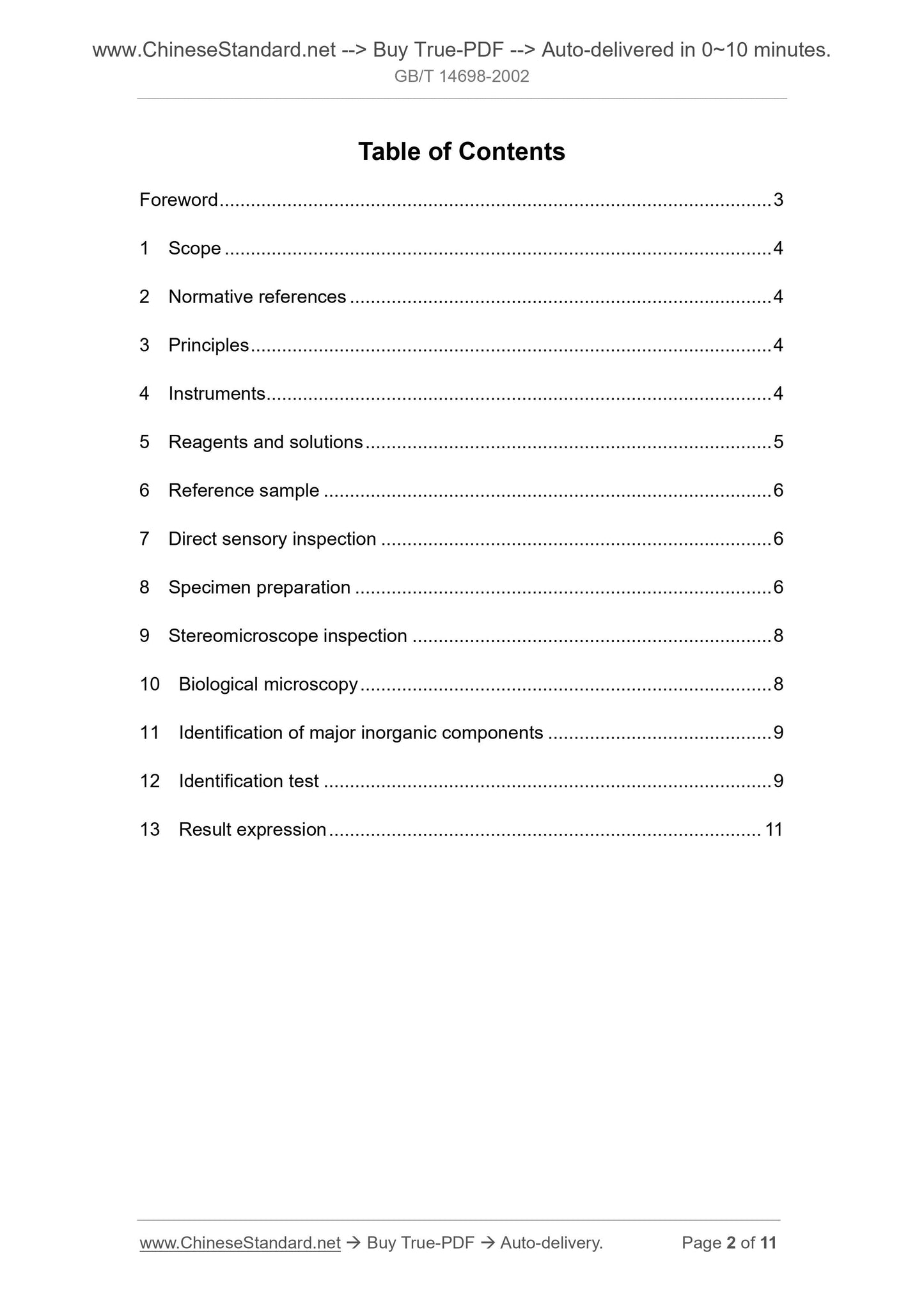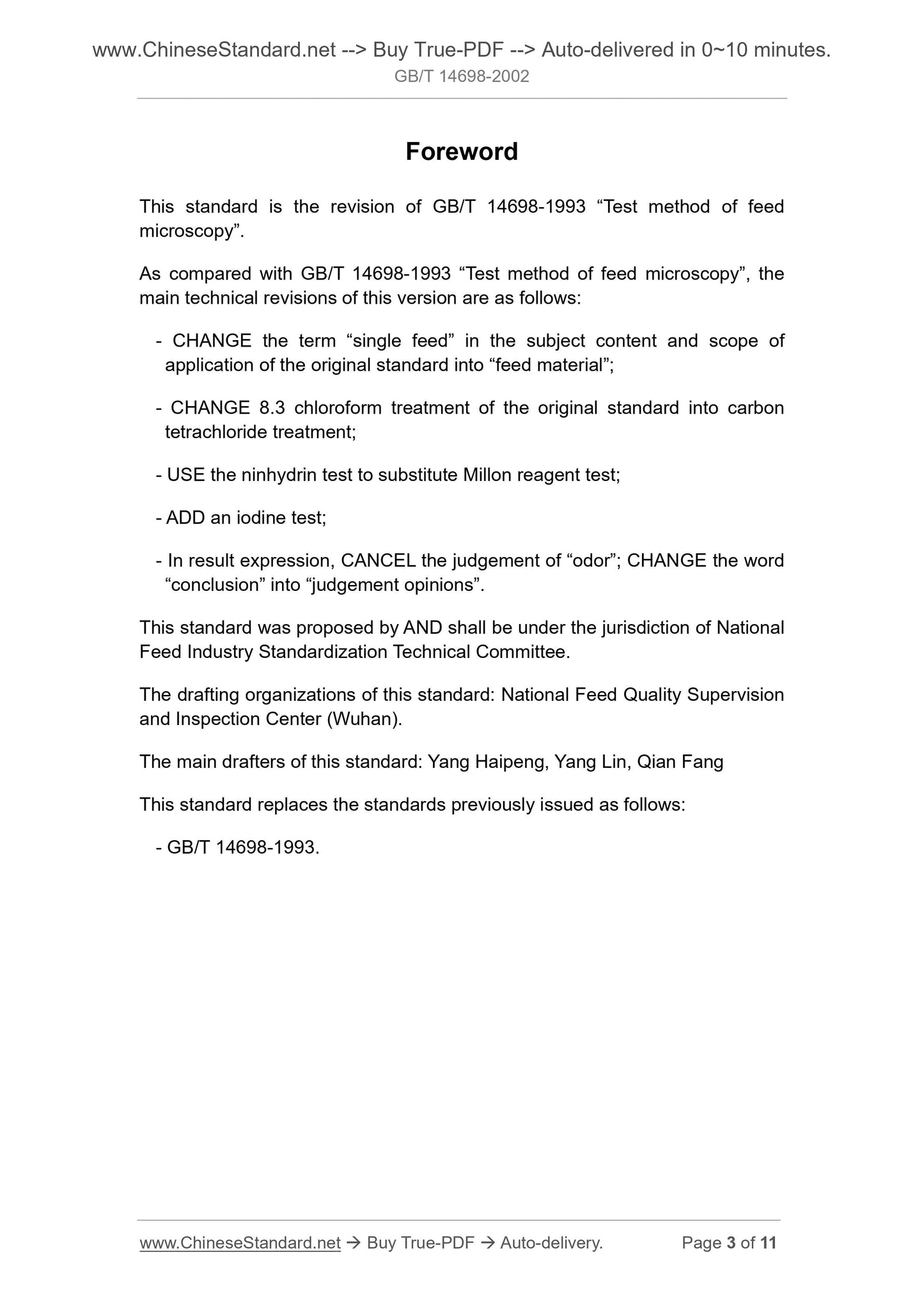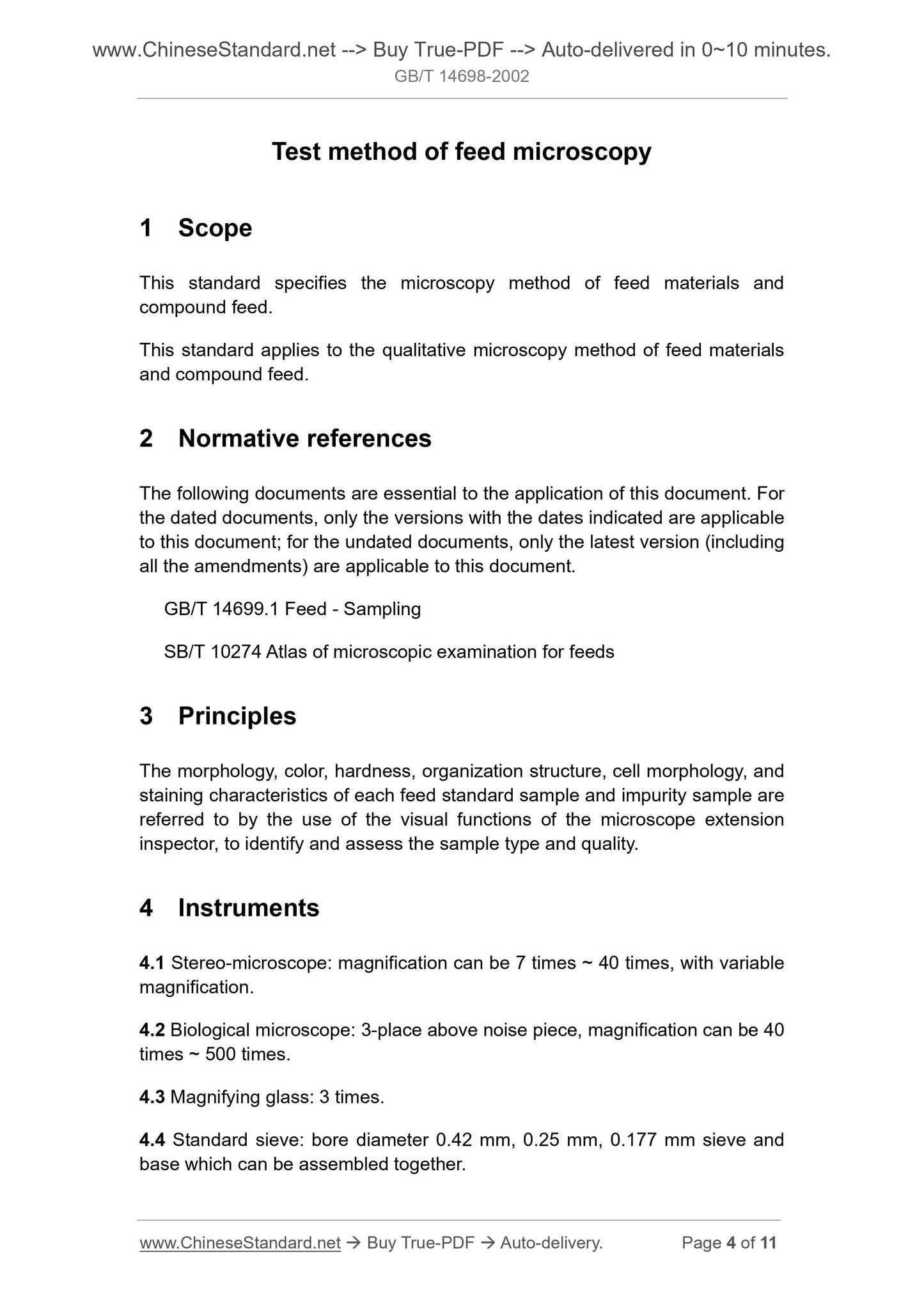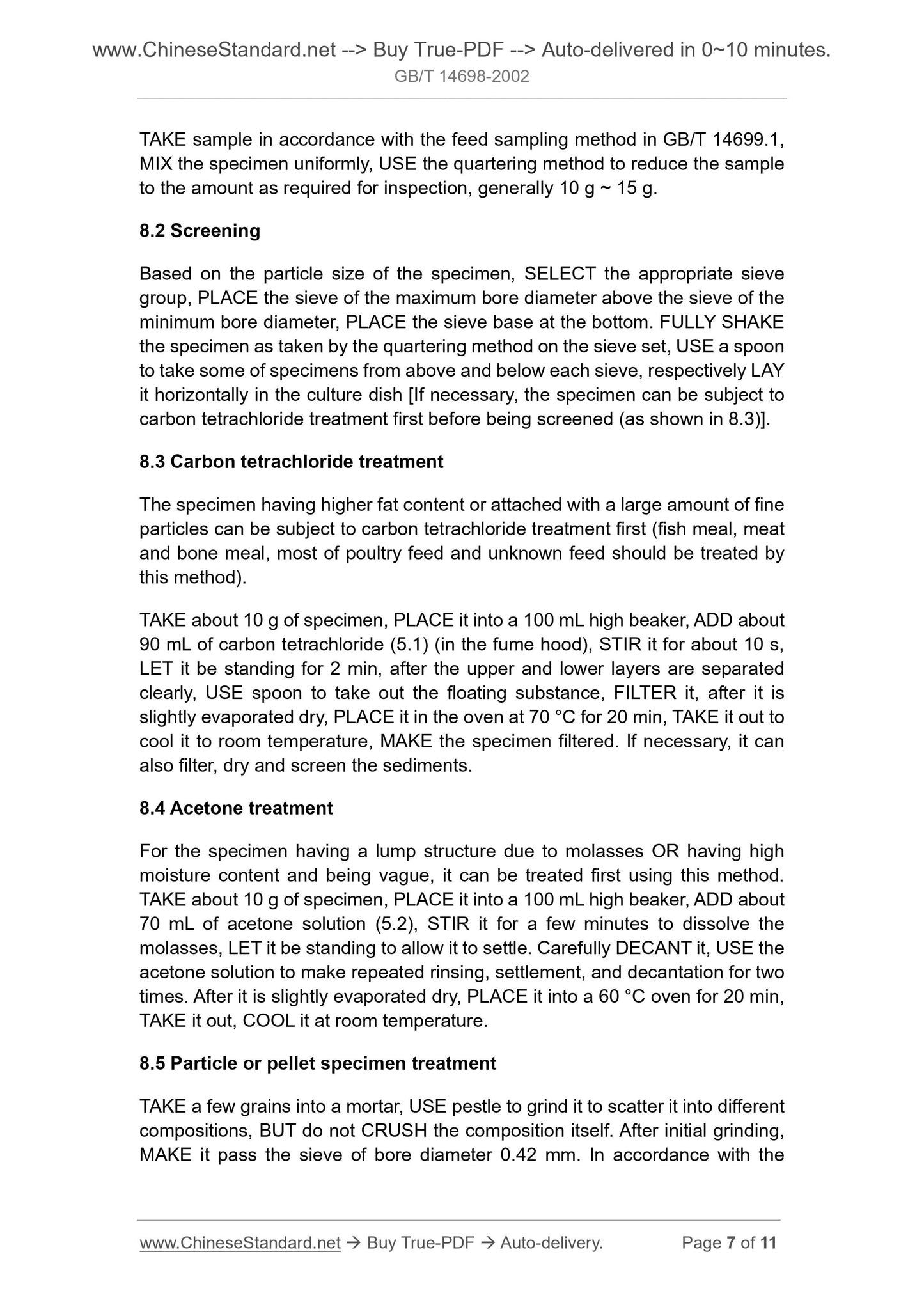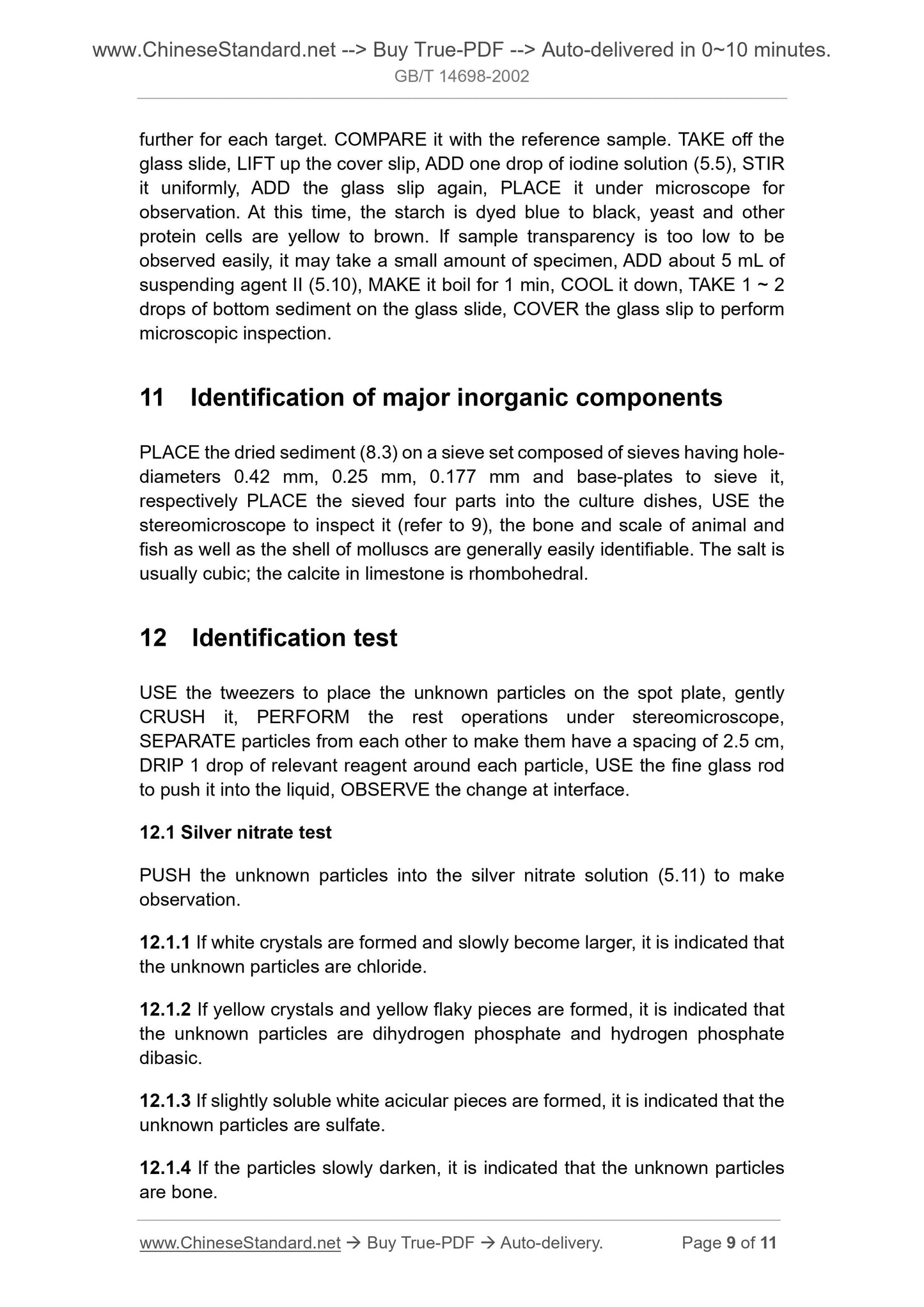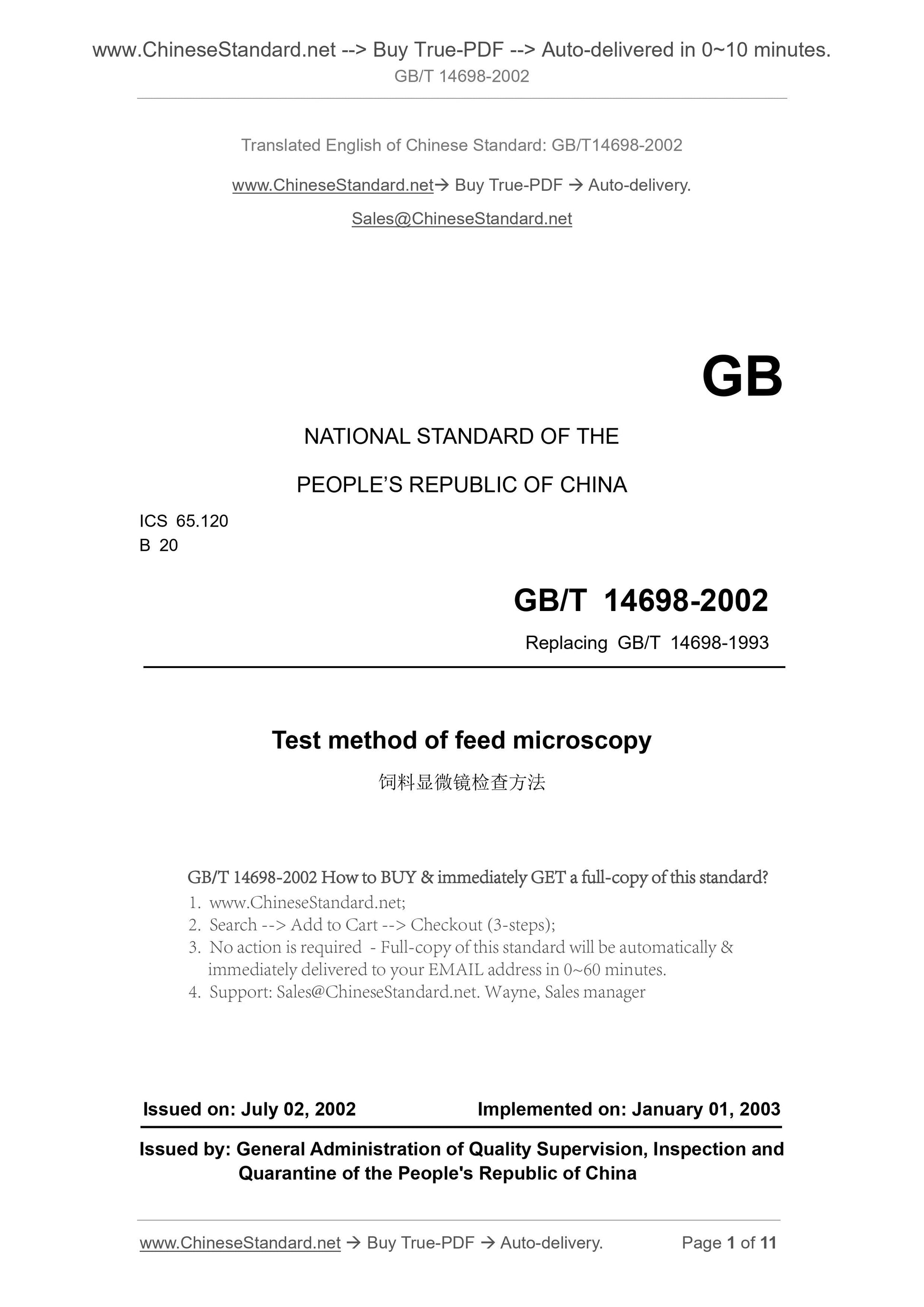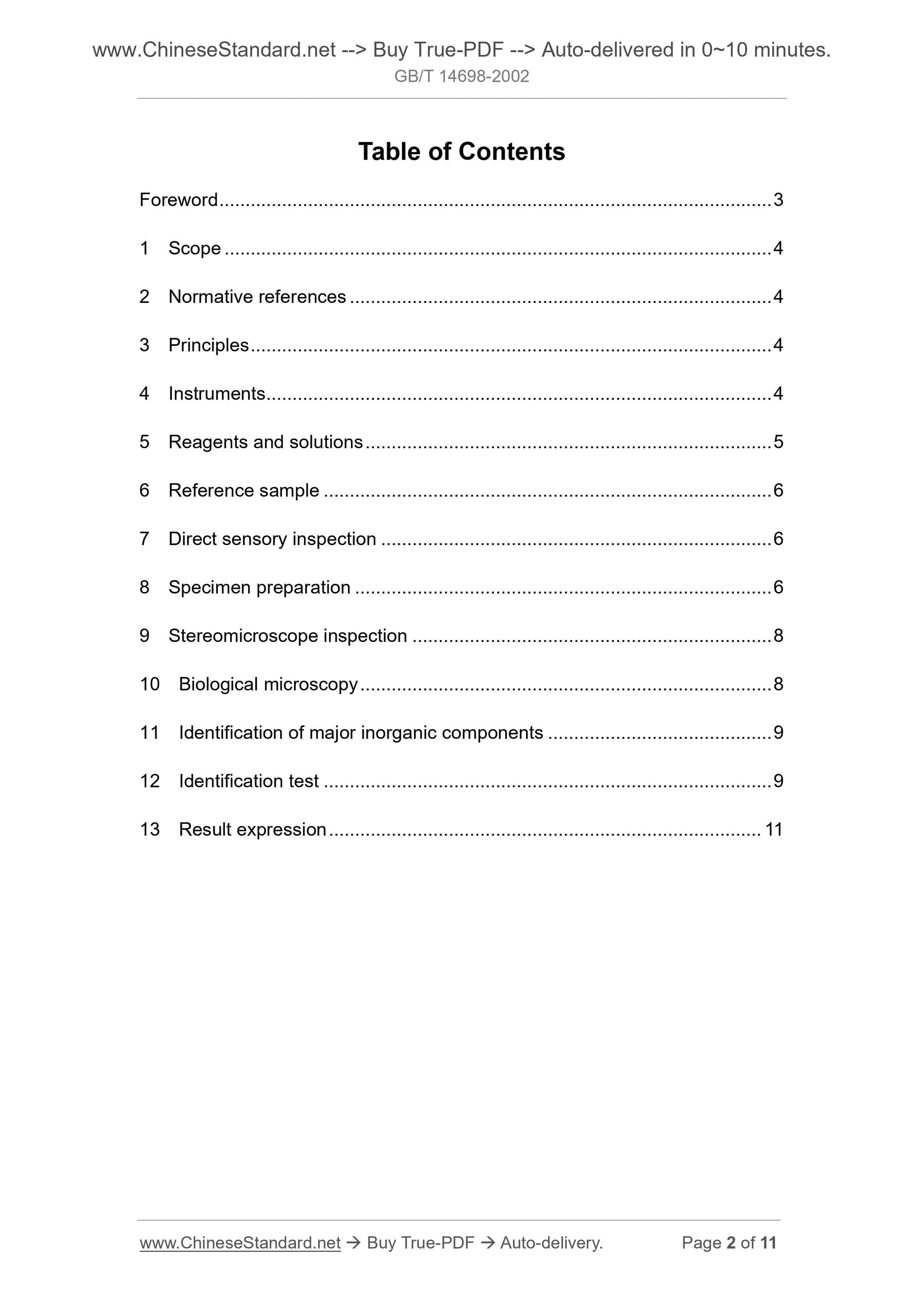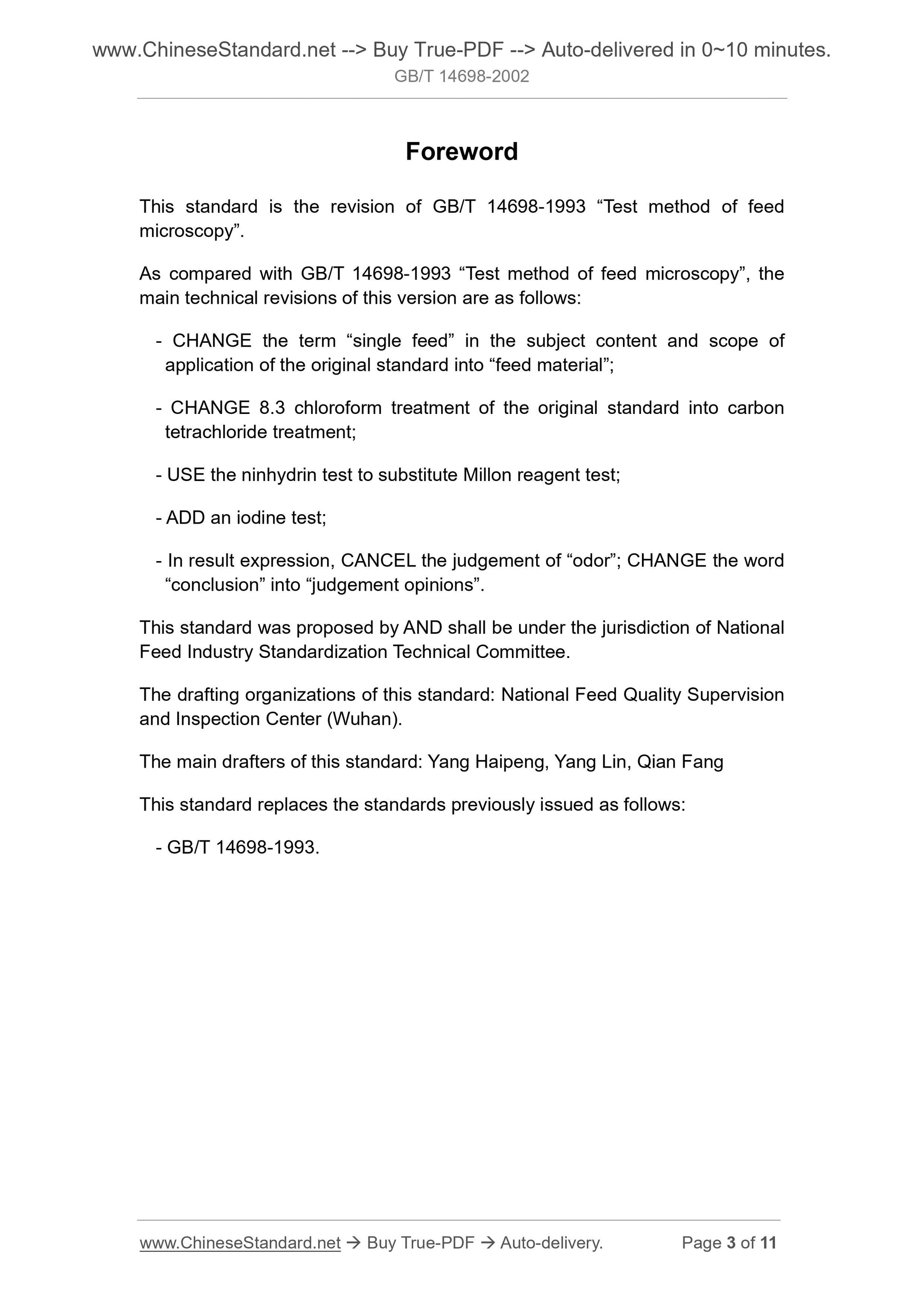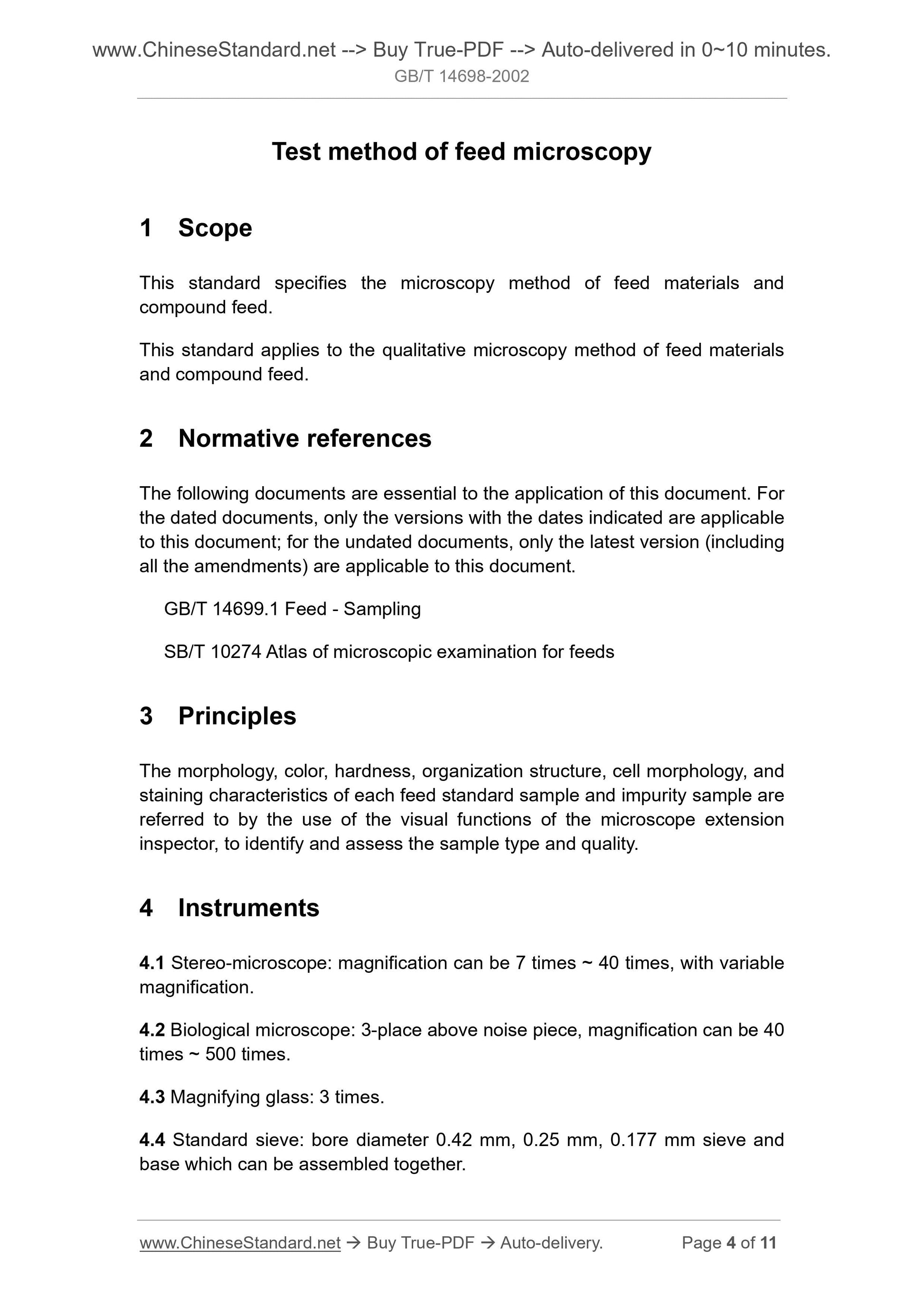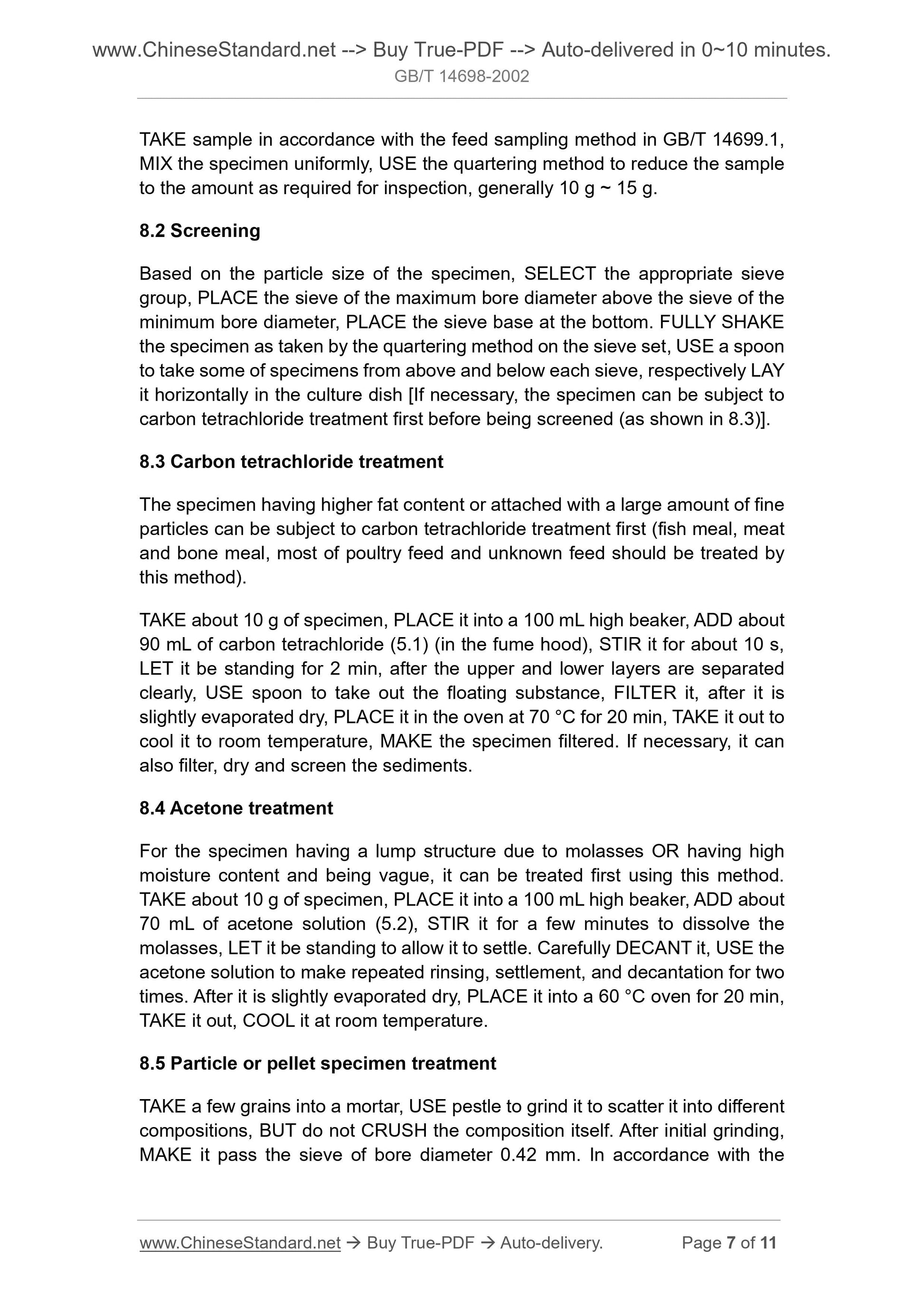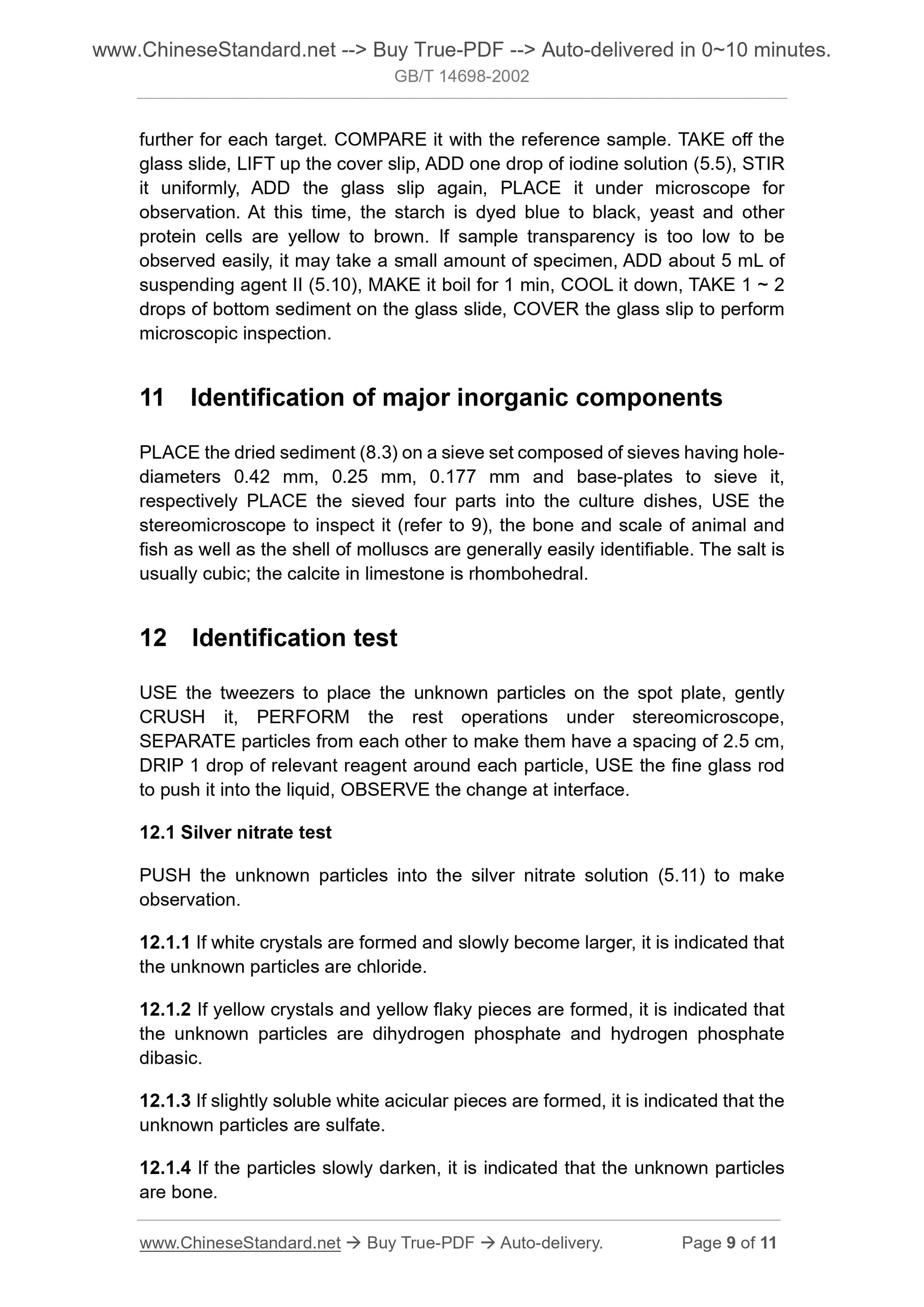1
/
of
6
PayPal, credit cards. Download editable-PDF & invoice In 1 second!
GB/T 14698-2002 English PDF (GB/T14698-2002)
GB/T 14698-2002 English PDF (GB/T14698-2002)
Regular price
$120.00
Regular price
Sale price
$120.00
Unit price
/
per
Shipping calculated at checkout.
Couldn't load pickup availability
GB/T 14698-2002: Test method of feed microscopy
Delivery: 9 seconds. Download (and Email) true-PDF + Invoice.Get Quotation: Click GB/T 14698-2002 (Self-service in 1-minute)
Newer / historical versions: GB/T 14698-2002
Preview True-PDF
Scope
This standard specifies the microscopy method of feed materials andcompound feed.
This standard applies to the qualitative microscopy method of feed materials
and compound feed.
Basic Data
| Standard ID | GB/T 14698-2002 (GB/T14698-2002) |
| Description (Translated English) | Test method of feed microscopy |
| Sector / Industry | National Standard (Recommended) |
| Classification of Chinese Standard | B20 |
| Classification of International Standard | 65.12 |
| Word Count Estimation | 7,740 |
| Date of Issue | 7/2/2002 |
| Date of Implementation | 1/1/2003 |
| Older Standard (superseded by this standard) | GB/T 14698-1993 |
| Quoted Standard | GB/T 14699.1; SB/T 10274 |
| Issuing agency(ies) | General Administration of Quality Supervision, Inspection and Quarantine of the People Republic of China |
| Summary | This Standard specifies the feed ingredients and feed microscopic examination methods. This Standard is applicable to feed materials and compound feed qualitative microscopic examination. |
Share
